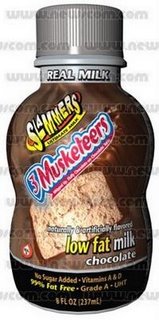 As she points out in her comment on an earlier post, Michele Simon will speak tomorrow to a special public session of my U.S. Food Policy class at the Friedman School, on the topic of her new book, Appetite for Profit.
As she points out in her comment on an earlier post, Michele Simon will speak tomorrow to a special public session of my U.S. Food Policy class at the Friedman School, on the topic of her new book, Appetite for Profit.Open to the public at 4 p.m., October 31, in Auditorium B of the Sackler Building, on Tufts' Boston Campus.
Simon's book describes Kraft's nutrition marketing through its "Sensible Solutions" label and logo. To be granted this honor, a beverage for example "must be free of or low in calories, fat, saturated fat, sugar, or sodium, or must have 25 percent less of one of these in comparison to the base product or an appropriate reference product; and must be reviewed by Nutrition Department."
The key word in this mumbo jumbo is "or."
In much clearer English, a product that is all sugar may be labeled a Sensible Solution because it is low in fat. Or, a product that is all fat may be labeled low in sugar.
Following up on a hilarious example Simon mentions, I notice that the Capri Sun Sport Thunder Punch drink, heavily marketed to children, has 60 calories per 200 ml serving, according to the Nutrition Facts label [note, 7:30 p.m.: this sentence was edited to remove a previous suggestion that 200 ml was a misleading small serving size -- it is actually the size of the small 6.75 oz. packages]. Because the product is all sugar, it has no fat, and hence qualifies for the "Sensible Solution" label.
From the label, here are the ingredients: WATER, HIGH FRUCTOSE CORN SYRUP, SUGAR, CITRIC ACID, SODIUM CITRATE, POTASSIUM CITRATE, NATURAL FLAVOR.
The label carries the astonishing claim: "hydrates kids better than water." I'd like to know if those kids were drinking only 200 ml!
I am sympathetic to the hope that Kraft and other leading reputable food and beverage companies, who know their products and their consumers better than anybody, could in principle help solve nutrition problems through their own private voluntary efforts at consumer education. But, truly, we must first look their current nutrition marketing straight in the face and call it false.













